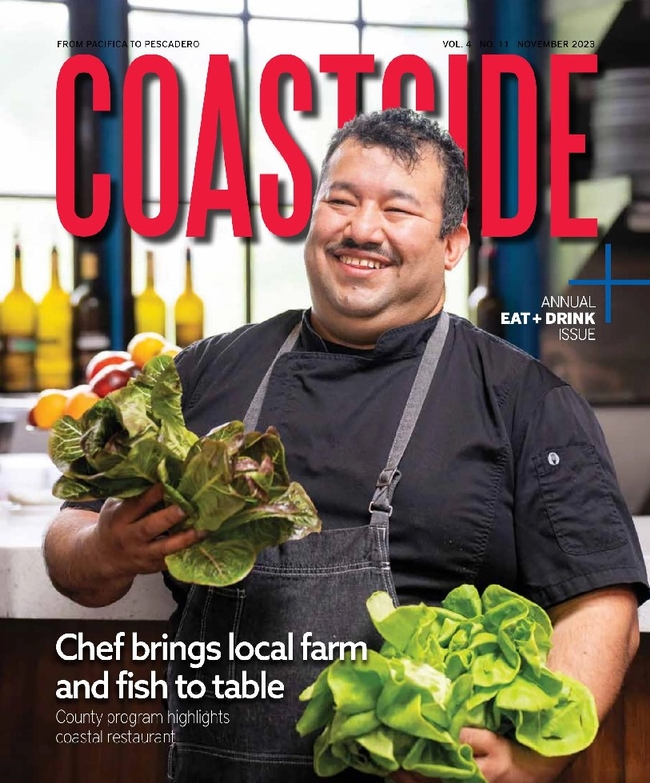What is a lawn? For many of us, those traditional squares of lush, green turf grass have not only been a part of the landscape, but also an icon of our American culture for generations. A manicured lawn symbolized prosperity and respectability. Learning how to mow was a rite of passage as well as a source of income for many enterprising kids. Now, with the increasing need for sustainability in all aspects of daily life, the thirsty, fertilizer-intensive lawn has become a focal point for change. Some homeowners are doing away with lawns entirely, opting for native plantings or succulents. But for those who love a beautiful expanse of green, there are sustainable alternatives that can thrive in a coastal environment and as well as contribute to fire safety.
“Greener” Grasses
Low-growing plants that replicate the look and feel of typical turf grasses are referred to as “grass alternatives.” Many are drought tolerant and require significantly less water than traditional lawns. This helps lower water bills and conserve an important natural resource. Grass alternatives generally require less maintenance compared to traditional grass lawns which means less time, effort, and money is needed to keep them healthy. An added benefit for allergy sufferers: grass alternatives don't produce pollen the way grass does. Some varieties have extensive root systems that help to stabilize soil and prevent erosion. Importantly, grass alternatives promote biodiversity by providing food sources and habitats for pollinators and other local wildlife. Lawn alternatives offer many types of unique and attractive landscaping options with a variety of colors, textures, and heights that can be included in rooftops and other locations where traditional grasses might struggle to grow.
Meandering Meadows
Meadow gardens are groups of plants, often natives, that are arranged and allowed to naturalize, thereby simulating a wild meadow. Flowering plants are often included but grasses are a key element. Creating a meadow garden allows you to include some of the coast side region's natural beauty at your doorstep and transform your outdoor space into a serene and bio-diverse haven. As you create your garden design and decide on the plants you will use, consider the height and width of each plant, and arrange them like a meadow with taller plants placed toward the back and shorter ones near the front. This will create depth and visual interest in your garden.
Fire Safety
In our current milieu, protecting your home from wildfires is crucial, and selecting grass alternatives can play an important role in reducing the spread of fire. Current recommendations call for non-flammable hardscaping materials like gravel, pavers or stone pathways within the first 5 feet away from your home to reduce the risk of ignition. Moving farther out, using green, low-growing vegetation, fire-resistant building materials and ensuring plants around the home are properly spaced, pruned and healthy can significantly reduce fire risks.
Here are some grass alternatives that are well-suited to the Northern California coast and are environmentally friendly:
Kurapia (Lippia nodiflora) is a low-growing, herbaceous, perennial groundcover belonging to the Verbenaceae family. Its dense and sturdy structure gives it excellent soil stabilization, aiding soil erosion, providing strong wee suppression, and tolerates a wide range of soil types, pH levels, and salinity.
Fescue (Festuca californica) is a native grass that thrives coast side and adds a graceful and natural appearance to a garden. It is an excellent choice for homeowners looking to create a meadow-like landscape, and it is drought-tolerant, low-maintenance, and (after established) requires minimal watering.
Idaho Fescue (Festuca idahoensis) shares many of the same qualities as California fescue including drought tolerance and adaptability to coastal conditions. Its clumping growth habit reduces the need for frequent mowing and maintenance.
Buffalograss (Buchloe dactyloides) is drought tolerant and enjoys sunny areas. Buffalo grass can be mowed to create a manicured look or left unmowed for a more natural appearance.
Pacific Beach Strawberry (Fragaria chiloensis) is a perennial native California species that grows 4-8 inches high with dark green leaves and produces small strawberries in the fall.
Blue Grama Grass (Bouteloua gracilis) is a drought tolerant native grass that forms dense clumps that resist fire spread. It requires little maintenance once established.
Muhly Grasses (Muhlenbergia) are ornamental and add aesthetic value to your garden. They are generally fire-resistant.
Ground covers: There are several hardy, drought tolerant groundcovers that reduce fire danger and conserve water. Creeping thyme, ice plant (Delosperma), or native sedges (Carex species) are good choices. Succulent plants, including many varieties of Sedum, have fire-resistant properties due to their water-filled leaves and can be used as ground covers and in rock gardens.
Landscaping with grass alternatives on the Northern California coast aligns with the region's commitment to environmental conservation and sustainability. Whether you decide on native grasses, ground covers, or meadow plantings, you can create a beautiful and eco-friendly garden.
Resources:
California Center for Urban Horticulture: https://ccuh.ucdavis.edu/kurapia
UC Marin Master Gardeners: https://marinmg.ucanr.edu/PLANTS/LAWN_AND_ALTERNATIVES/#alternatives
Cynthia Nations is a UC Master Gardener who planted Kurapia in her El Granada garden in 2017 and has appreciated its beauty ever since. This article was edited by UC Master Gardener Maggie Mah.
UC Master Gardeners of San Mateo-San Francisco County are volunteers who are trained under the auspices of the University of California to provide science-based information on plants, horticulture, soil, and pest management at no charge to the public. For more information and to find out about classes and events in your area, visit our website where you can also sign up for our newsletter and contact our Helpline: http://smsf-mastergardeners.ucanr.edu/
Attached Images:
